107 – How To Properly Bathe and Dry Your Dog with Laura Reeves
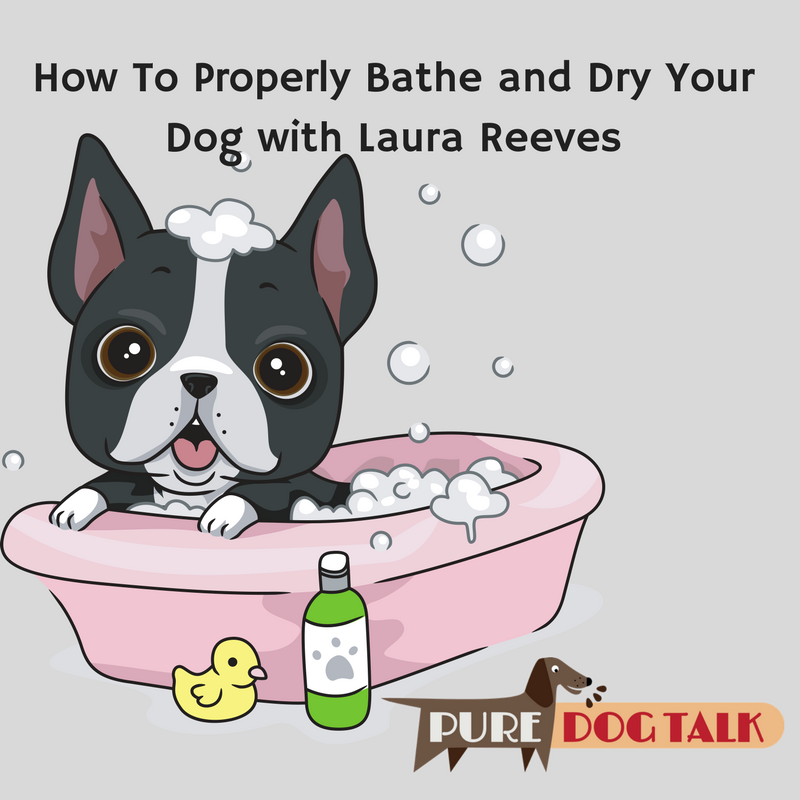
Proper Bathing and Drying of Dogs with Laura Reeves
Our bathing dogs topic today is a thank you for Facebook Fan #2000 Joann Frisch! Joann says she owns a grooming salon, so she’s always up for grooming topics.
We covered pretty basic steps in Episode 73 and working with wire coats in Episode 88.
Importance of Bathing and Drying
But I worked pet grooming for a number of years and the one thing it teaches you is how VERY important bathing and drying are to the success of grooming any dog. Everybody starts out as a bather in pet grooming or as a professional handler’s assistant. And there is a reason for that.
A half clean, half dry dog is going to get sent back to the tub. Every time. The reasons would seem sort of self explanatory but considering the number of them I have sent back over the years and the number of client dogs who arrive clearly suffering the effects of the same malady, I’m going to hedge my bets on this.
There is no place for half way clean and dry, even for a pet dog, never mind a show dog. While your Italian Greyhound isn’t going to take as long as your Newfoundland, they all need the same level of care.
So let’s start at the top.
Nail Trim
Do it first. Get it out of the way before you have to trim feet around too long toenails. We’ve discussed nails before and I’ll just say it again briefly. Dogs feed off YOUR nerves. If you’re scared you’ll make the dog bleed, he’s going to figure there is a reason to be scared and panic and make the entire process a nightmare. Patience fearless leader, patience. Firm, fair and consistent. And always win the battle of wills. Just because your dog doesn’t *want* his toenails trimmed is NO reason not to do it.
Anal Glands
ONLY if needed. And if you don’t know how, learn the proper method! We’ve included a video link on the website to a veterinarian demonstrating the proper procedure. Most large breed active dogs will not need this procedure. Smaller breeds and less active animals or those that are overweight can experience more difficulty. For obvious reasons, do this *before* the bath!
Ears
Clean, pluck if needed. If you need to pull hair from the ear canal, be sure to clean it thoroughly afterward to prevent bacterial or fungal infection. Chlorhexadine ear cleaner is absolutely fabulous for preventing and clearing up ear problems.
Teeth
Do they need scaling?? Now is a good time to do it. Don’t have a tooth scaler? I was taught years ago how to use the thin edge of dime to achieve the same goal in a safe manner for dogs and humans. Use your tool to *gently* get to the gum line and pull down (or up) and away from the gums. I generally focus on the canines and any nasty buildup on the molars. Chlorhex makes a *fabulous* pre-soaked gauze pad for more regular cleaning of teeth.
BRUSH
As noted in previous shows, don’t wash a matted dog. Get the dog fully brushed to the skin, all over his body. Testicle mats, toe mats, belly mats, armpit mats…. Get them out BEFORE you bathe. Use a comb, use brushing spray, use Cowboy Magic, use a mat splitter if you have to, but make sure every part of the dog’s body is thoroughly brushed *to the skin*! You should be able to pull the dog’s hair back and see skin, not clumpy hair, on even the most densely coated dogs.
After nails, ears, anal glands, teeth and brushout, THEN you can get the bath started.
Bathing
Alrighty, on to the actual bathing part. Make sure ALL of the dog is wet (assuming you’re doing a full bath). And wet to the skin. For some coat types, this takes some effort, using a good spray attachment on the hose and really working the water in the coat. Use lukewarm water as a general rule. If you want to hold coat use cold water, if you want to accelerate the process of a dog that’s dumping coat, use warmer water. Apply your shampoo in a dilution according to the directions or guidance from a mentor. Dumping a big blob of shampoo on top of Fluffy’s back is not going to be the best use of your products or your time. Use your hands or one of those rubber squeegee brushes to distribute your product over the dog’s entire body and down to the skin. You want to be sure that ALL of the hair is getting washed, not just the top part.
Shampoos and Products
We could spend the bulk of an entire show just on the topic of different products. Every single person has their own favorite brands, combinations, rituals and magic potions. I have different products and preferred brands for different coat types, colors, condition … like that. In general, I love the PurePaws products and #1 All systems. But I use specific products from nearly every brand line for something.
Stain Removal
Stain removal is *always* a hot topic. For beards and feet I’ve found a mixture of 50/50 water and 6% hydrogen peroxide (some vendors carry it at the show or you can find at a Sally’s Beauty Supply type store) in a solid container spray bottle (it breaks down in light) to be most effective and not expensive. It’s critically important to remember that if you strip the coat with something like peroxide (#1 all systems whitening gel is also very good for the task) that you have to condition it heavily. You’ve opened up the hair shaft and the first bit of spit, urine, red clay, whatever your staining issue will just suck right in and you’ll be worse off than when you started. Since you’ll need to use heat from a hot dryer to achieve best results from any of the “whitening” type products, it just exacerbates the crunchy, stripped, dull coat problem. Conditioner is your friend!
Keep Problem Areas Clean for Prevention
In fact, most of the “hair” masters will tell you to keep the problem areas clean and conditioned on a daily basis. Keep the dog on a quality food. Keep him clean and dry (yep, it’s a lot of work in the winter if you have, say, a Clumber Spaniel dripping in coat….) Even just a quick foot and belly bath with wash tubs will work wonders. In other words, an ounce of prevention is worth a pound of cure! For more words of wisdom from the true artists, visit the link in the show notes to an interview with top drop coat specialists.
Table Baths
On the topic of table baths. This is sort of a dying art that more folks would do well to perfect. At the show, at home, wherever. Get two dish pan sized tubs. Fill both half full of tepid water. Add a teaspoon of your favorite shampoo to one and conditioner to the other. Using big sponges (one for each tub) you squeeze water through the beard, legs, belly, pants — whatever hair needs to be gently and quickly cleaned. I have a ritual that I can blow through in half an hour if I have to at the show. Wash tub goes in front of the dog. Sponge water into the beard and the front legs, holding them over the tub so as to not make such a mess. Tub moves under the dog’s body, I do the same for the belly coat. Tub moves to the back of the dog and I do both back legs, pants if needed, etc. Swap wash tub for rinse tub (containing diluted conditioner) and repeat the process in the same order. At the show this gives the dog a fresh appearance without having go through an entire bath. At home, it helps prevent staining that’s a common result of food, saliva, urine and so on in the coat.
No Hotel Baths
For the love of all that is holy, DO NOT wash your dogs in the hotel bathtub! Do we have any question why there are fewer and fewer hotels that allow dogs?! Come on people. And yes, I am talking to YOU! Don’t do it!
Sun Bleach
Another issue we run in to is sun bleach on black or liver colored dogs. That rust/orange/yellow tint isn’t pretty! Wash the dog with your regular shampoo, rewash with a lightly diluted “black” shampoo like Chris Christensen’s black on black, (More information on this particular product is linked on the website.) follow the directions for letting the product sit in the coat and then rinse and condition with a product that suits the dog’s coat type. In other words, the conditioner I use on the Tibetan Terrier’s coat is going to be far to “heavy” for the Newfoundland, weighing the coat down instead of allowing it to stand off the body.
Conditioner
A bit more on conditioner… USE it!  Even wire coated breeds need it at least in the furnishings so they don’t break off. The proper light weight conditioner even for a double coated breed will add shine. The extra polish that top dogs exhibit is in large part due to daily maintenance and the proper use of conditioners to keep the hair coat in its best condition. If in doubt as to the correct product for your breed, ask questions! Ask your breeder, your mentor, a successful professional in the breed. Use the world wide web, in all its glory, for good, and make contact with the people who have knowledge. And here’s another important point. Randomly throwing out a question to one of the proliferation of online forums will bring you a wide variety of information. Some of it might be useful, the rest may well be from keyboard warriors. Learn to value the knowledge that comes from successful experience.
Even wire coated breeds need it at least in the furnishings so they don’t break off. The proper light weight conditioner even for a double coated breed will add shine. The extra polish that top dogs exhibit is in large part due to daily maintenance and the proper use of conditioners to keep the hair coat in its best condition. If in doubt as to the correct product for your breed, ask questions! Ask your breeder, your mentor, a successful professional in the breed. Use the world wide web, in all its glory, for good, and make contact with the people who have knowledge. And here’s another important point. Randomly throwing out a question to one of the proliferation of online forums will bring you a wide variety of information. Some of it might be useful, the rest may well be from keyboard warriors. Learn to value the knowledge that comes from successful experience.
Rinse
OK, so we’ve sudsed, rinsed, conditioned and now it’s time to rinse again. I’ll tell you the same thing I tell my assistants. Rinse. Then rinse again. Then rinse again. THEN feel through the *entire* coat to make sure you don’t encounter residue or stickiness that indicates remaining product in the coat. Then rinse one more time for good measure. I’m *two weeks* in to fighting a nasty hotspot on a pug dog who wasn’t sufficiently rinsed. Finally, use your hands like a squeegee to pull off the bulk of the water. I train my dogs to shake on command (yes, it really does work) so that a) I don’t get drenched while bathing and b) they can do part of my work for me.
If you’re using a leave in conditioner product of some kind, I prefer to get the dog out of the tub and on the table, use a towel to squeeze the hair (not scrub it around), then apply the leave in product to damp hair instead of dripping wet hair.
Drying the Dog
Now we get to the drying part. In pet grooming, time is money, so everything gets dried with a force dryer on high speed. If you are VERY good, you can do this without tangling long coat in hopeless knots. If you aren’t, please, do not try this at home! lol Force dryers work best for blasting water out of heavy double coats.
I like to refer to force dryer work as having an end result that is either “flat” or “fluffy”… Wire coats, or anything that you want a flat lying jacket (setters, spaniels, some retrievers, etc) you can use the force dryer nozzle resting just slightly off the parallel plane of the body and blow the hair WITH the grain. Move the dryer in long sweeping motions along the dog’s body— maintain the same position and avoid swirling it around. That just makes the hair stand up crazy and doesn’t reduce your drying time. Go slowly, work thoroughly and the coat will lay down beautifully when you’re done. Once the back coat is dry, pin a dry towel or over it while you do the furnishings with a hot dryer.
Drying Double Coats
For double coated breeds, anything you want volume (akita, shiba, siberian, malamute, newfoundland, Turvuren etc) you can use the force dryer aimed straight in to the body. Not so much blowing the coat against the grain as aiming the force dryer perpendicular to the dog’s body and moving again in sweeping motion down the length of the body. Know your breed, know what the final picture should be. If the topline needs to lie flat, use the “flat” technique there and “fluffy” for sides, ruff, pants etc…. All of this involves using a brush in one hand and the dryer in the other. Particularly if you are trying to strip undercoat out or to add additional volume. The brush/dry routine will also cut down some of your drying time.
Hot Dryers or Stand Dryers
Hot dryers and or stand dryers for furnishings, drop coats, cockers, poodles, etc assures the polished presentation you’re aiming for. Again, brush while drying to make sure the coat dries straight and lies properly. In many cases, you can make everyone’s life easier and teach the dog to lie down on the grooming table for brushing and drying. Completely dry one area before moving to the next so that the dog’s coat, particularly on poodles, bichons, water dogs, etc, doesn’t partially dry curled when your goal is to blow it straight. As was pounded into my head some years ago, good scissor or clipper work cannot be done on a badly-dried dog.
Everything to the Skin
Brush to the skin, wash to the skin, and dry to the skin. Done. Kiss your dog on the nose and give him a cookie. If you have trimming to do, give your pal a break before you start the next project. Let him pee and stretch his legs and play with him some. Then you can move on to phase two. We’ll talk about the various trimming skills you might need in a future show.
Our Valued Corporate Sponsors:
Our Esteemed Advertisers:
Our In-Kind Supporters:
KNOWLEDGE IS POWER — FRANCIS BACON
When you become a patron of Pure Dog Talk you’ll tap into an exclusive community of experts to help you and your dog be blue-ribbon best at whatever you do with your purebred dog! Your support helps keep the MP3's rolling at Pure Dog Talk!
As a supporter, you’ll immediately gain access to the weekly Pure Pep Talk SMS, Pure Pep Talk private Facebook group, and priority emails. Patrons can choose to level up to the After Dark Zoom and a Patrons Digital Badge for their website— even a private counseling session with Laura on any topic.

DON'T MISS AN EPISODE!!


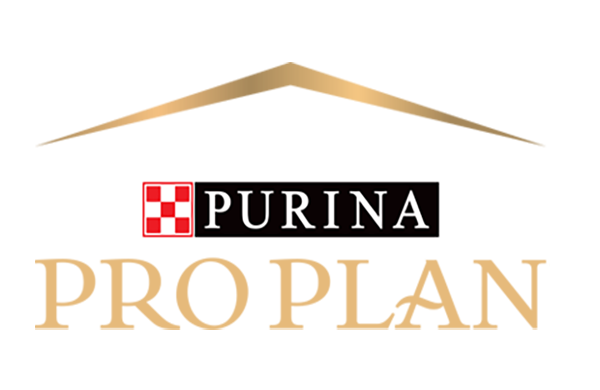




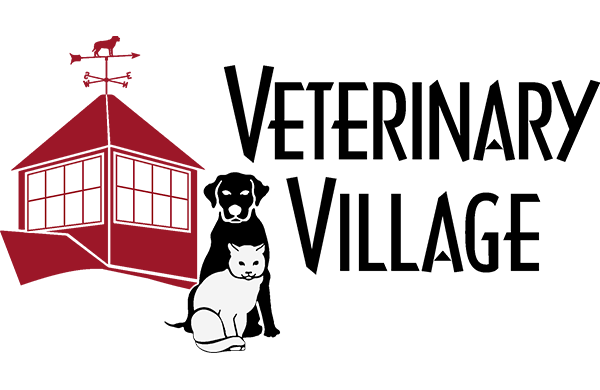

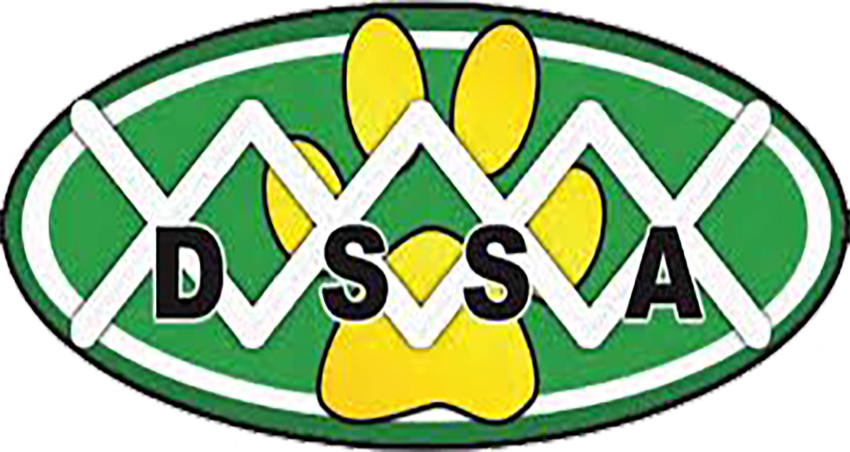


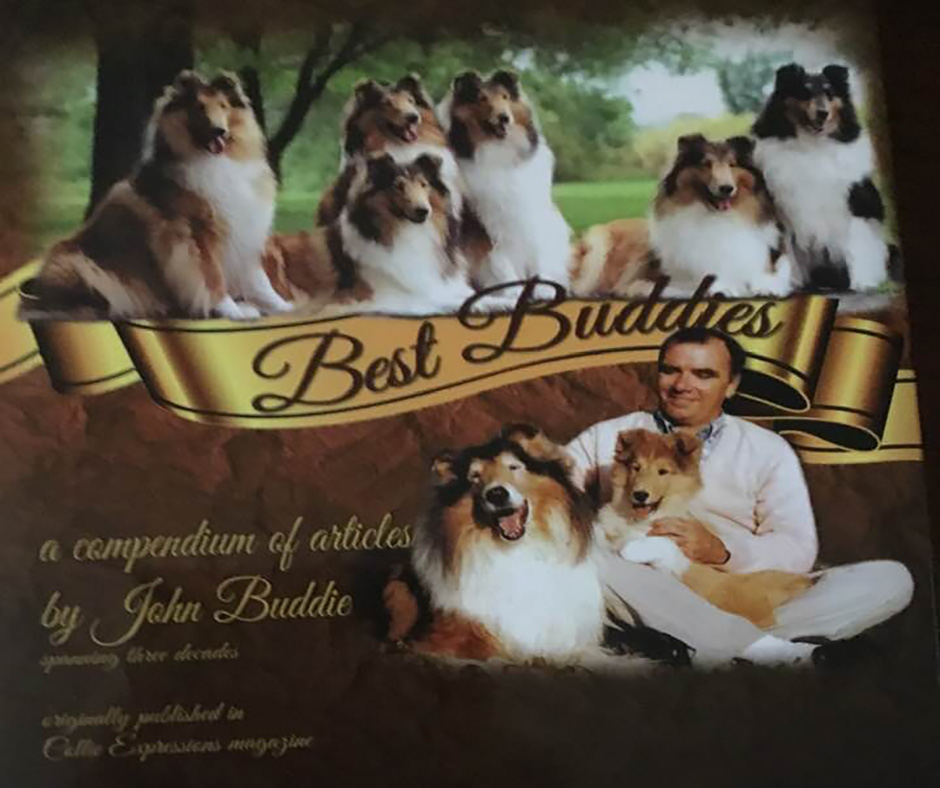

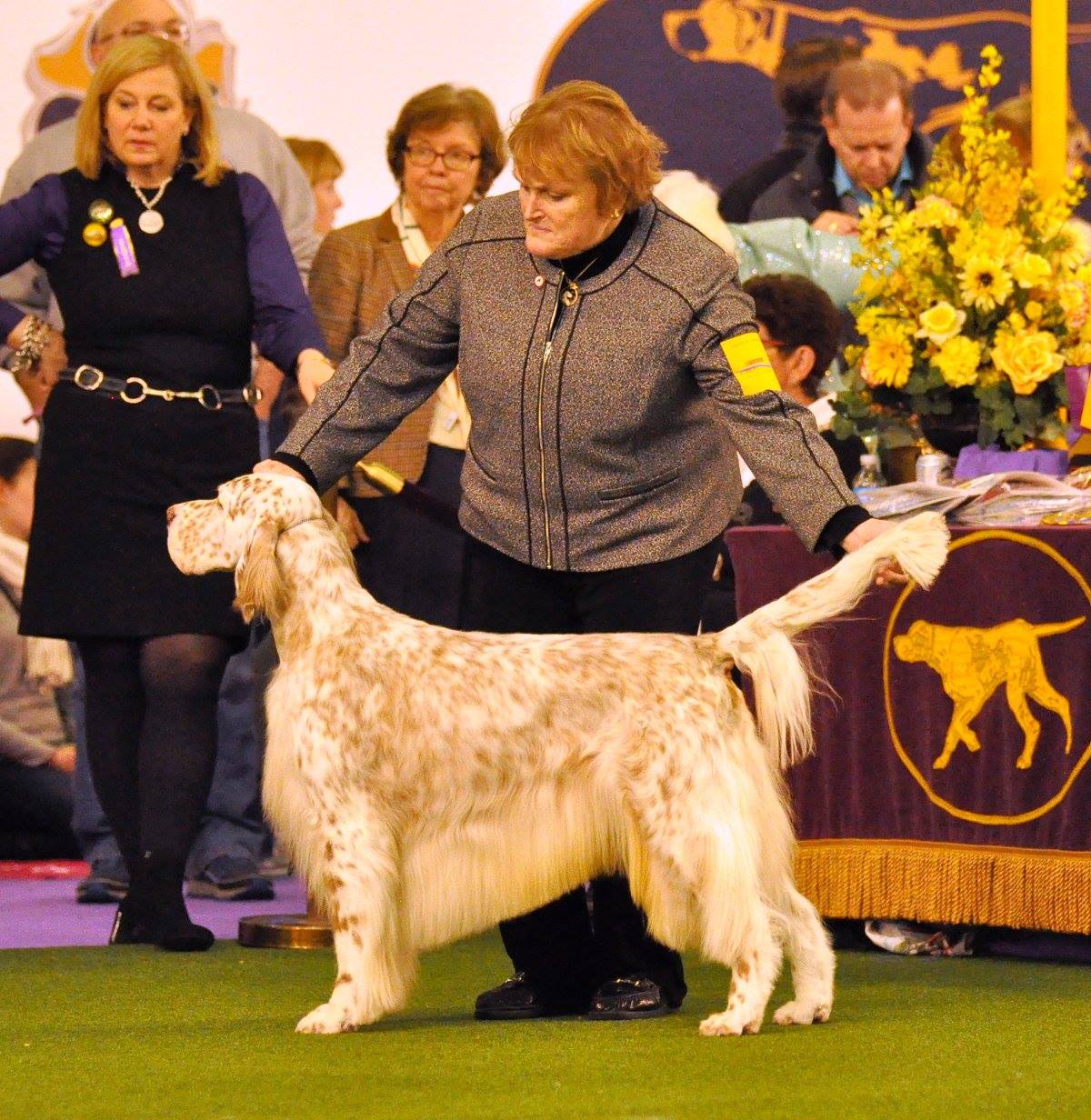
[…] to Episode # 107 How To Properly Bathe Your Dog for more on how to bathe […]
[…] to Episode # 107 How To Properly Bathe Your Dog for more on how to bathe […]
Just because your dog doesn’t *want* his toenails trimmed is NO reason not to do it.
Red Deer Dog Waste Services